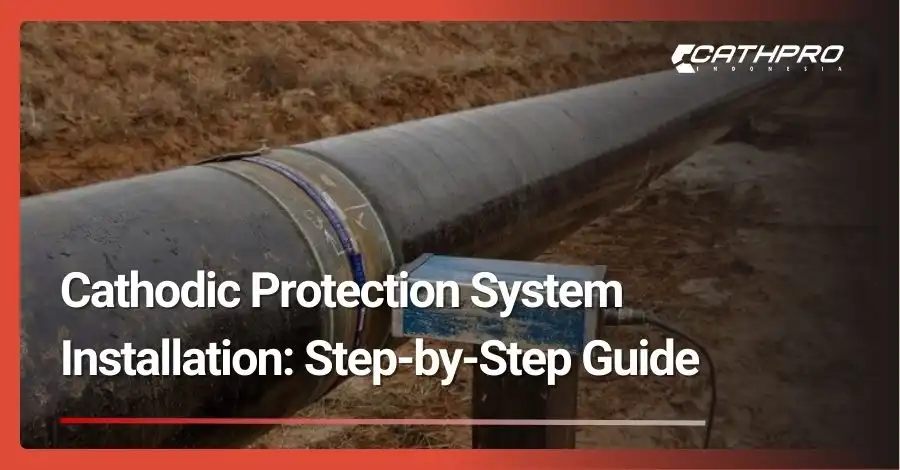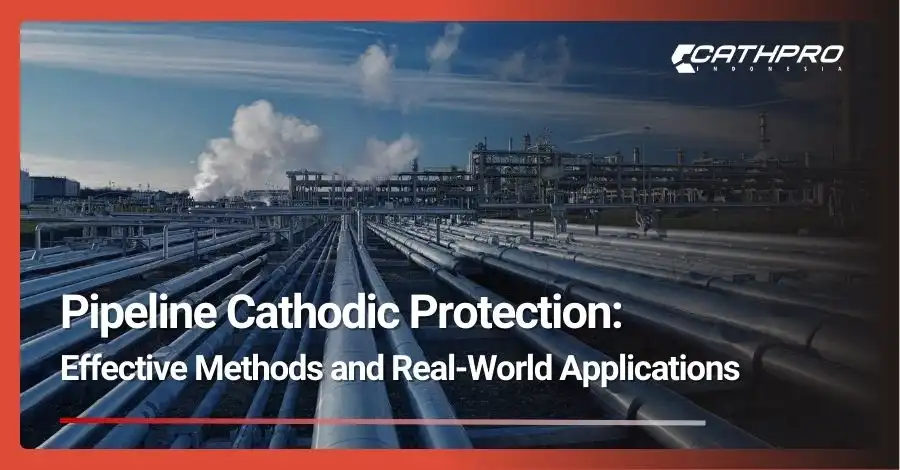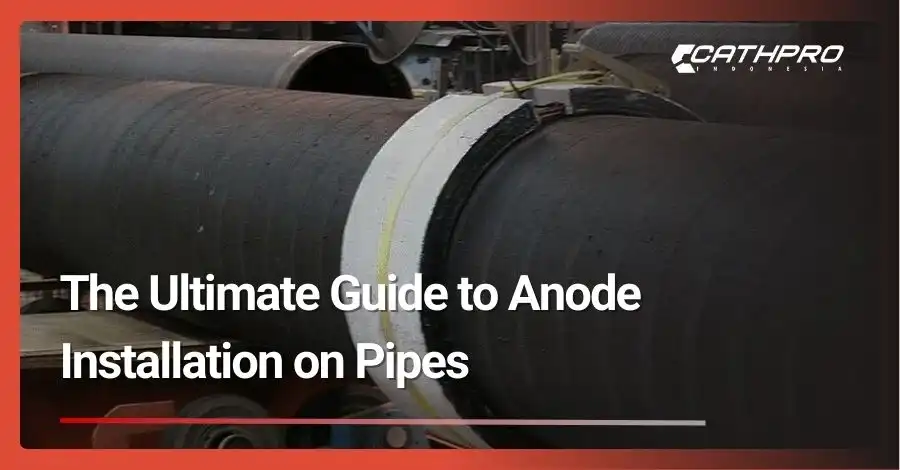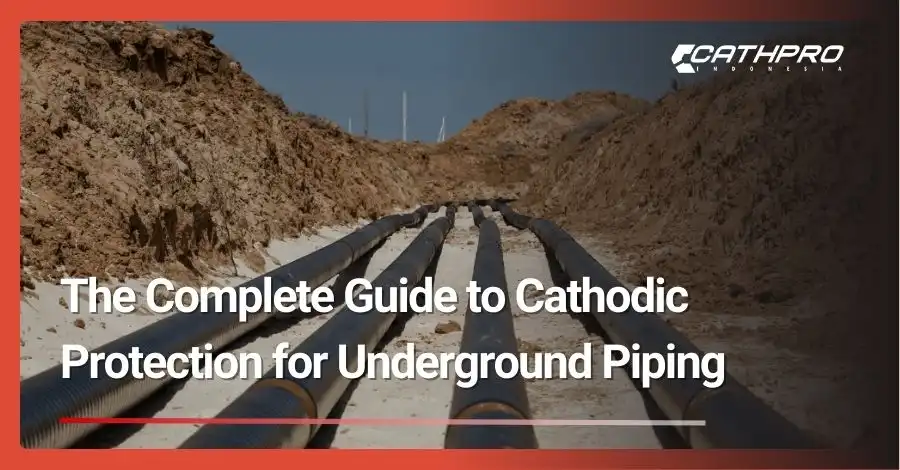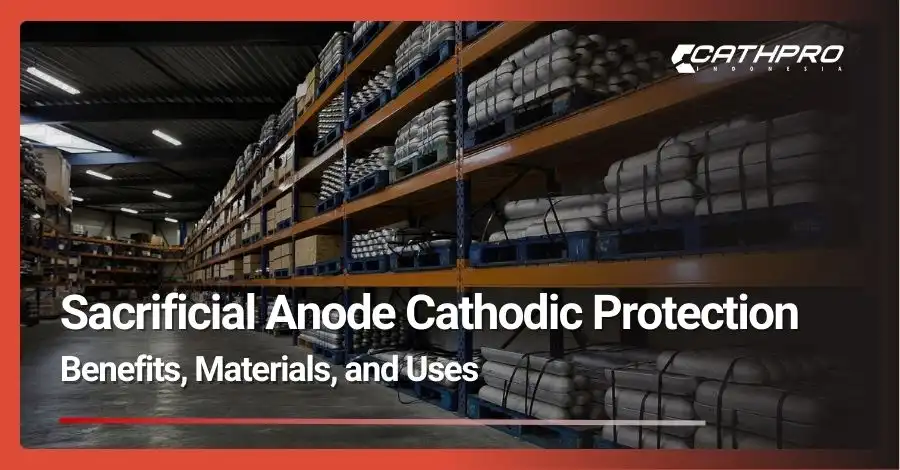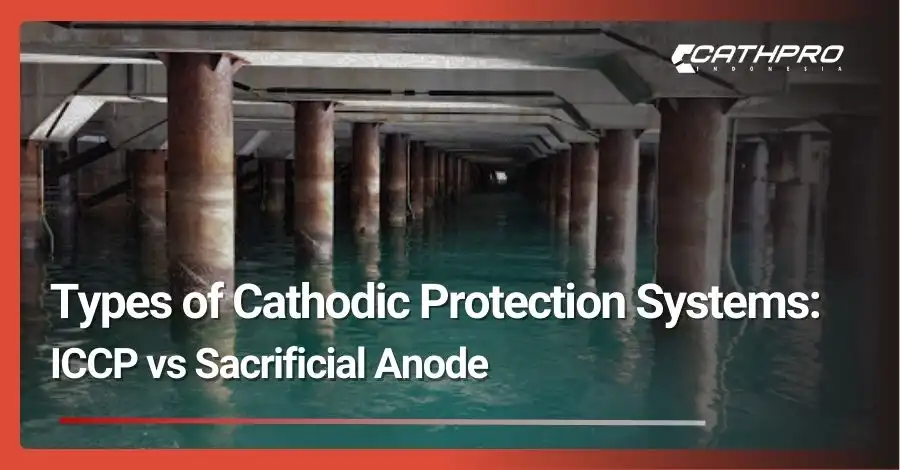When a major oil pipeline in Alaska suffered catastrophic failure due to corrosion, it cost the company over $500 million in damages and environmental cleanup. This disaster could have been prevented with proper cathodic protection system installation. Whether you’re managing offshore platforms, underground pipelines, or storage tanks, understanding the installation process is crucial for protecting your metal infrastructure from corrosion’s devastating effects.
What Is a Cathodic Protection System?
A cathodic protection (CP) system is an electrochemical corrosion control method that prevents metal structures from deteriorating in harsh environments. Think of it as an invisible shield that converts your metal surface into a cathode through controlled electrical current flow. This transformation protects the structure from rust and degradation, extending its lifespan by decades.
The system operates on a simple principle: by making the protected metal more electronegative, corrosion reactions are redirected to a sacrificial component. This technology has protected critical infrastructure worldwide since the 1960s, saving billions in replacement costs annually.
Two Main Types of CP Systems
Impressed Current Cathodic Protection (ICCP)
Uses an external power supply and inert anodes to deliver protective current. This system excels in high-resistivity environments and large structures. It offers adjustable protection levels and typically lasts 20-30 years with proper maintenance.
Sacrificial Anode Cathodic Protection (SACP)
Employs reactive metal anodes like zinc, aluminum, or magnesium that corrode preferentially. These anodes “sacrifice” themselves to protect the primary structure. While simpler to install, they require periodic replacement every 5-15 years depending on environmental conditions.
Why Proper Installation Matters
The performance of your cathodic protection system installation depends entirely on execution quality. Industry data shows that 40% of CP system failures result from improper installation rather than design flaws. A poorly installed system creates vulnerability gaps that accelerate localized corrosion.
Consider this: unprotected areas in a pipeline can corrode 10 times faster than normal due to galvanic coupling with protected sections. This phenomenon creates safety hazards in critical infrastructure including pipelines, storage tanks, and marine vessels. The resulting damage often requires expensive emergency repairs that cost 5-10 times more than preventive protection.
Correct installation ensures regulatory compliance with NACE SP0169 and ISO 15589 standards. It maximizes system efficiency while minimizing long-term operational costs. Most importantly, it protects human lives and the environment from potentially catastrophic failures.
Step-by-Step Cathodic Protection Installation Process
Installing a cathodic protection system requires methodical planning and precise execution. While specific requirements vary by application, this comprehensive framework guides successful installations across industries.
Step 1 – Site Assessment and Design
Before any physical work begins, engineers conduct thorough environmental surveys. Soil resistivity testing for underground pipelines reveals conductivity variations that affect current distribution. Marine applications require water salinity analysis to determine anode consumption rates. The team evaluates the metal structure’s condition, identifying existing corrosion and coating defects.
This data feeds into sophisticated modeling software that optimizes anode placement and current requirements. Engineers calculate the surface area needing protection and determine current density requirements. Based on these factors, they select between ICCP or sacrificial anode systems, considering both immediate needs and long-term operational goals.
Step 2 – Material Selection
Material selection directly impacts system longevity and effectiveness. For sacrificial systems, zinc anodes work best in seawater with resistivity below 1,000 ohm-cm. Magnesium anodes excel in high-resistivity soils above 2,000 ohm-cm. Aluminum-based anodes offer cost-effectiveness for large marine structures.
ICCP systems require mixed metal oxide (MMO) or high-silicon cast iron anodes that resist consumption. Cable specifications must account for environmental exposure and current capacity. Rectifiers need appropriate voltage and amperage ratings with remote monitoring capabilities.
Every component must meet international standards like NACE, ISO, or DNV specifications. Using substandard materials compromises the entire installation, leading to premature failure and costly remediation.
Step 3 – System Installation
Physical cathodic protection system installation begins with site preparation. For buried pipelines, crews excavate trenches maintaining specific depths and backfill requirements. Marine installations require specialized diving teams or cofferdam construction. Tank applications need surface preparation and mounting bracket installation.
Anode placement follows precise engineering drawings, maintaining calculated spacing for uniform current distribution. Installers secure anodes using appropriate bedding materials—carbonaceous backfill for soil applications or specialized brackets for marine environments. Cable routing requires careful attention to avoid damage from environmental factors or mechanical stress.
Connection quality determines system reliability. Technicians use thermite welding or mechanical connectors rated for the application. For ICCP systems, rectifier installation includes proper grounding, surge protection, and ventilation requirements.
Step 4 – Testing and Commissioning
Comprehensive testing validates installation quality before system activation. Engineers measure structure-to-electrolyte potentials using calibrated reference electrodes. These readings confirm adequate polarization across the entire protected surface. Current output testing verifies rectifier operation and anode performance.
Continuity testing ensures all connections maintain low resistance paths. Engineers adjust rectifier settings or reposition anodes if coverage gaps exist. The commissioning process typically takes 24-72 hours for polarization stabilization.
Documentation includes baseline readings, as-built drawings, and commissioning reports. This information establishes performance benchmarks for future monitoring and regulatory compliance.
Step 5 – Monitoring and Maintenance
A cathodic protection system requires continuous monitoring to maintain effectiveness. Monthly visual inspections check for physical damage or vandalism. Quarterly potential measurements track protection levels using permanent reference electrodes. Annual surveys provide comprehensive system evaluation including anode consumption rates.
Remote monitoring systems enable real-time performance tracking and instant alerts for system anomalies. Maintenance activities include rectifier calibration, anode replacement scheduling, and cable repair. Regular audits ensure continued compliance with industry regulations and insurance requirements.
Cost Factors in Cathodic Protection Installation
Installation costs vary significantly based on multiple factors. ICCP systems typically require $50,000-$200,000 initial investment but offer 25+ year lifespans. Sacrificial systems cost $20,000-$80,000 initially but need anode replacement every 5-15 years. Project size directly impacts material quantities and labor requirements.
Environmental complexity affects installation difficulty and costs. Offshore installations can cost 3-5 times more than onshore equivalents. Rocky soil conditions increase excavation expenses by 40-60%. Advanced monitoring systems add $10,000-$30,000 but reduce inspection costs by 70% over the system lifetime.
When evaluating costs, consider total lifecycle expenses including maintenance, monitoring, and potential failure consequences. Proper cathodic protection system installation typically provides 10:1 return on investment through extended asset life and prevented failures.
Industries That Benefit from Cathodic Protection Systems
Cathodic protection systems serve diverse industries facing corrosion challenges. Oil and gas pipelines transport products thousands of miles, requiring comprehensive protection for operational safety. Water utilities protect distribution networks and storage facilities from internal and external corrosion. The maritime industry shields ships, harbors, and offshore platforms from aggressive saltwater environments.
Storage tank operators prevent product contamination and environmental releases through effective corrosion control. Industrial facilities including refineries, power plants, and chemical processors depend on CP systems for equipment longevity. Bridge and highway infrastructure increasingly employs cathodic protection to combat road salt damage.
Conclusion
Successful cathodic protection system installation represents a critical investment in infrastructure longevity and safety. From initial site assessment through ongoing monitoring, each installation phase contributes to system effectiveness. The process demands expertise, quality materials, and meticulous attention to detail.
Whether protecting pipelines, marine structures, or industrial facilities, properly installed CP systems deliver decades of reliable corrosion prevention. The technology continues evolving with improved materials and monitoring capabilities, making protection more efficient and cost-effective. By following established installation procedures and industry standards, organizations safeguard their assets while ensuring regulatory compliance and operational continuity.
Ready to protect your critical infrastructure with professional cathodic protection system installation? Contact Our Cathpro Indonesia engineers today for a comprehensive consultation and customized solution for your corrosion challenges.

